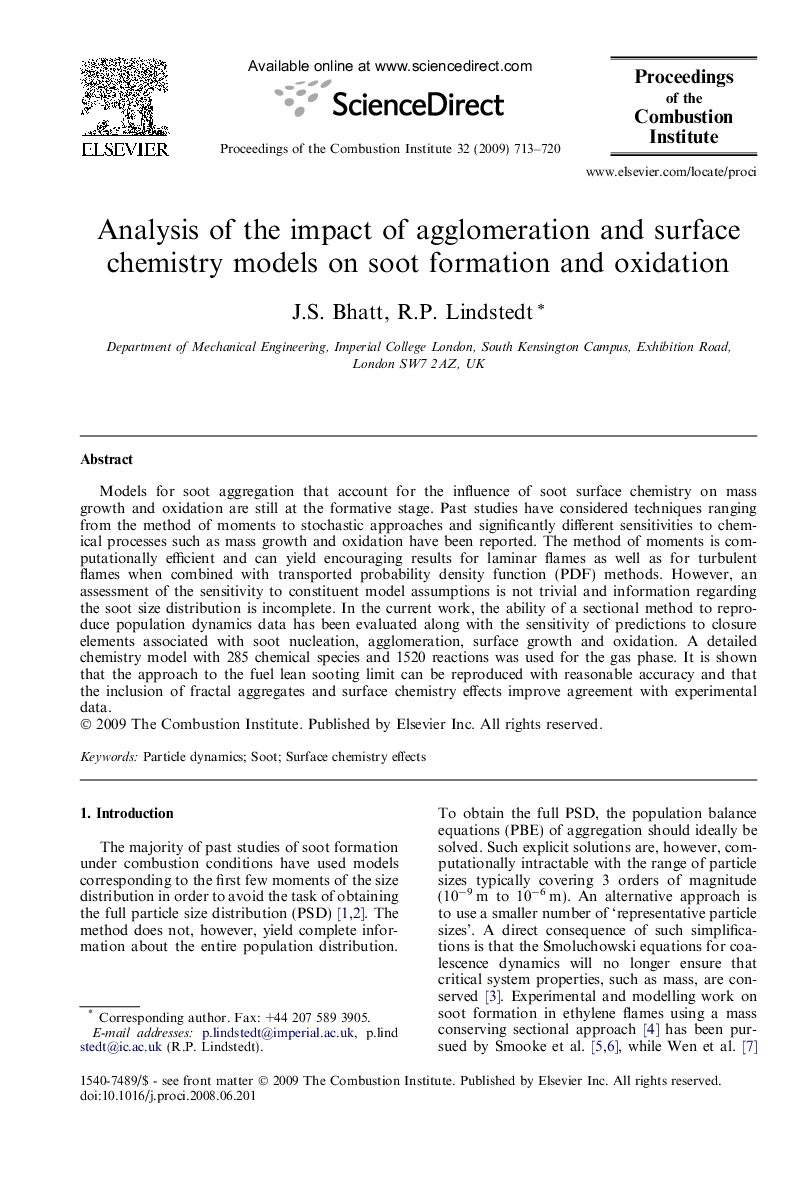| Article ID | Journal | Published Year | Pages | File Type |
|---|---|---|---|---|
| 6679466 | Proceedings of the Combustion Institute | 2009 | 8 Pages |
Abstract
Models for soot aggregation that account for the influence of soot surface chemistry on mass growth and oxidation are still at the formative stage. Past studies have considered techniques ranging from the method of moments to stochastic approaches and significantly different sensitivities to chemical processes such as mass growth and oxidation have been reported. The method of moments is computationally efficient and can yield encouraging results for laminar flames as well as for turbulent flames when combined with transported probability density function (PDF) methods. However, an assessment of the sensitivity to constituent model assumptions is not trivial and information regarding the soot size distribution is incomplete. In the current work, the ability of a sectional method to reproduce population dynamics data has been evaluated along with the sensitivity of predictions to closure elements associated with soot nucleation, agglomeration, surface growth and oxidation. A detailed chemistry model with 285 chemical species and 1520 reactions was used for the gas phase. It is shown that the approach to the fuel lean sooting limit can be reproduced with reasonable accuracy and that the inclusion of fractal aggregates and surface chemistry effects improve agreement with experimental data.
Keywords
Related Topics
Physical Sciences and Engineering
Chemical Engineering
Chemical Engineering (General)
Authors
J.S. Bhatt, R.P. Lindstedt,
